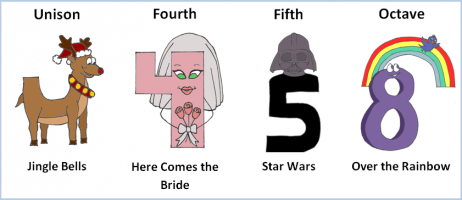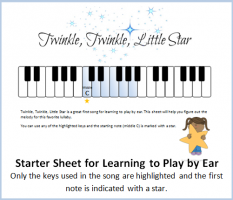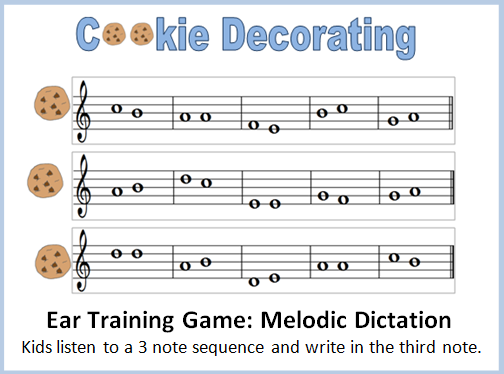Today we welcome Kristin Jensen of EarTrainingandImprov.com to share some of her advice and ear training resources for teaching key listening skills in young music students.
 My four and five year old students just aced a first grade level ear training exam. They’re also creating their own stunning songs. These kids understand how to utilize basic harmonic structures—they know which note combinations convey certain emotions, how to produce those sounds and how to use those sounds in their songs. And these kids have mile-wide grins when they perform their masterpieces. You can see their confidence and love of music as they play.
My four and five year old students just aced a first grade level ear training exam. They’re also creating their own stunning songs. These kids understand how to utilize basic harmonic structures—they know which note combinations convey certain emotions, how to produce those sounds and how to use those sounds in their songs. And these kids have mile-wide grins when they perform their masterpieces. You can see their confidence and love of music as they play.
How do you get kids to be able to interpret sound and then reapply that knowledge to their own music making? Read on to learn the secrets of ear training in early music education to get confident and creative musical kids.
Make it Fun
A well trained ear requires lots of practice. The traditional approach is sheer drudgery for kids: endless, boring drills.
You’ll see a willing student and much more progress if you make a child’s ear training experience fun. Instead of doing dreary drills over and over, try making the listening practice into a game. EarTrainingandImprov.com has ear training games for kids that are ready for you to print out and play.
Utilize Mnemonics: Visual and Audio
You probably already know that a great way to learn intervals is to associate each interval with a familiar song. This technique is even more powerful when you combine it with a visual aid.
Choose a song that’s familiar to the child and then choose an image to help her associate the interval number with that song. You could even help the child come up with an image and draw it herself. Below are some examples I use with my students. You can print these ear training visuals for free by clicking the link.


Create Music
By far one of the most effective methods I’ve found to help kids really master ear training is to encourage them to create music with the concept we’re currently working on.
When I first introduce a particular interval or chord, I ask the child to listen and describe how it sounds. I especially encourage them to describe the emotions the interval or chord conveys. Then we develop an assignment through which they create a song themed around that emotion.
For example, last Halloween I introduced half steps to my younger students and we talked about how creepy this interval sounds. Then I asked them to draw a picture of a monster and compose a song for that monster, using half steps in the composition. My older students were introduced to tritones and also participated. Everyone had a blast creating their songs and participating in the contest, and these kids quickly internalized the concepts.
Practice Playing by Ear
 Last fall I welcomed two siblings into my studio. One brother was phenomenal at playing by ear and creating his own songs. It was apparent that the other brother admired this ability and longed to play with such ease. He was thrilled when I showed him my easy method for learning to play by ear and he discovered that he too could develop this talent.
Last fall I welcomed two siblings into my studio. One brother was phenomenal at playing by ear and creating his own songs. It was apparent that the other brother admired this ability and longed to play with such ease. He was thrilled when I showed him my easy method for learning to play by ear and he discovered that he too could develop this talent.
With this formula, even my youngest students have been successful with simple songs. The key is to start with a song that is easily mastered. This builds confidence and the desire to tackle more challenging songs.
Here are the steps I follow when working with kids:
- Make sure the child knows the song well enough to sing it.
- Define which notes can be used. Having the full range of notes in front of you is overwhelming. The task seems much more surmountable when your options are limited.
- Give the child the starting note. Then help him sing the second note. Ask questions like “Does this second note sound higher or lower than the first? Is it much higher or only a little higher?” Then have the child try to find that second note on his instrument. Repeat this process to complete the song.
I’ve created some starter sheets for playing by ear, and you’re welcome to utilize them to help kids learn how to play by ear.

Kids with a well trained ear are better musicians.
They master their pieces more quickly and pay closer attention to the sounds they produce as they play. Ear training also makes musicianship more fun! Kids love being able to play their favorite songs by ear and take great pride in composing their own original songs.
Give these tips a try with the kids you teach and you’re sure to see their musicianship, confidence and creativity soar.










